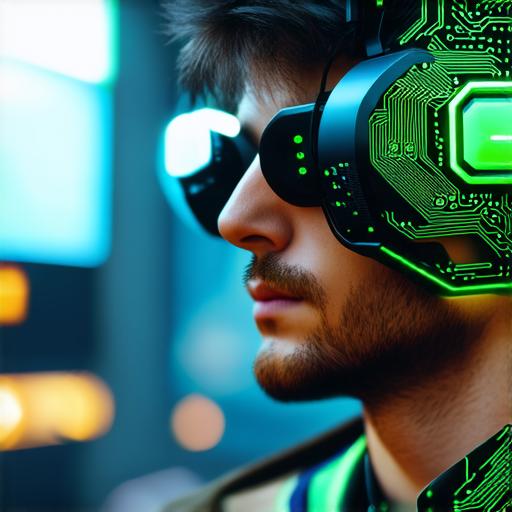Augmented reality (AR) is becoming increasingly popular in various industries, including gaming, education, and healthcare. AR allows users to interact with virtual objects in the real world, creating a unique and engaging experience.
Hardware Requirements
The first step in creating an AR experience is selecting the right hardware. There are several types of AR devices available, including smartphones, tablets, headsets, and glasses. Each device has its advantages and limitations, and the choice depends on the intended use case.
Smartphones and Tablets
Smartphones and tablets are the most common devices used for AR development. They offer a wide range of applications, from gaming to education and healthcare. AR apps can be developed for both Android and iOS platforms, making them accessible to a large user base. However, smartphones and tablets have limited processing power and memory compared to headsets and glasses.
Headsets and Glasses
Headsets and glasses provide a more immersive experience than smartphones and tablets. They offer higher resolution displays, more advanced tracking systems, and better field of view. Headsets and glasses are ideal for applications that require a high level of interactivity and realism, such as gaming and training simulations. However, they are less accessible than smartphones and tablets since they require additional hardware and software to run.
Software Requirements
In addition to hardware, AR development requires software. The software must provide the necessary functionalities to create an engaging and interactive experience. There are several software platforms available for AR development, including
Unity
,
Unreal Engine
, and
Vuforia
.
Unity
Unity is a popular game engine that can be used for AR development. It offers a wide range of features, including support for multiple platforms, 2D and 3D rendering, and real-time physics simulation. Unity also supports several AR SDKs, making it easy to integrate AR functionalities into the app.
Unreal Engine
Unreal Engine is another popular game engine that can be used for AR development. It offers advanced graphics capabilities, support for virtual reality (VR), and a range of plugins and tools for AR development. Unreal Engine also supports several AR SDKs, making it easy to integrate AR functionalities into the app.
Vuforia
Vuforia is an AR software platform that provides advanced tracking and recognition capabilities. It can be used for both indoor and outdoor applications and supports multiple devices, including smartphones, tablets, headsets, and glasses. Vuforia also provides a range of tools and plugins for AR development, making it easy to create engaging and interactive experiences.
Tracking and Recognition Technologies
Tracking and recognition technologies are essential for creating an AR experience. These technologies allow the app to track the user’s location in the real world and recognize virtual objects. There are several tracking and recognition technologies available, including camera-based tracking, motion capture, and computer vision.
Camera-Based Tracking
Camera-based tracking uses the device’s camera to track the user’s location and orientation in the real world. This technology is used for indoor and outdoor applications and can be integrated with AR software platforms like Vuforia. Camera-based tracking is accurate and reliable, but it has limited range and can be affected by lighting conditions.

Motion Capture
Motion capture is a technology that tracks the user’s movements in real time using sensors or cameras. This technology can be used to create realistic character animations and interactions in AR apps. Motion capture can be expensive and complex, making it less accessible than camera-based tracking.
Computer Vision
Computer vision is a technology that uses machine learning algorithms to recognize virtual objects in real time. This technology can be used for indoor and outdoor applications and can be integrated with AR software platforms like Vuforia. Computer vision is accurate and reliable, but it requires significant processing power and memory.
Summary
Creating an augmented reality experience requires several technologies working together seamlessly. The choice of hardware and software depends on the intended use case, while tracking and recognition technologies provide the necessary functionalities to create engaging and interactive experiences. AR is becoming increasingly popular in various industries, and the technology continues to evolve rapidly. As AR development becomes more accessible and affordable, we can expect to see even more innovative applications in the future.
FAQs
Augmented reality (AR) is a technology that allows users to interact with virtual objects in the real world.
The hardware requirements for AR development include smartphones, tablets, headsets, and glasses. The choice of device depends on the intended use case.
There are several software platforms available for AR development, including Unity, Unreal Engine, and Vuforia.
Tracking and recognition technologies include camera-based tracking, motion capture, and computer vision.
